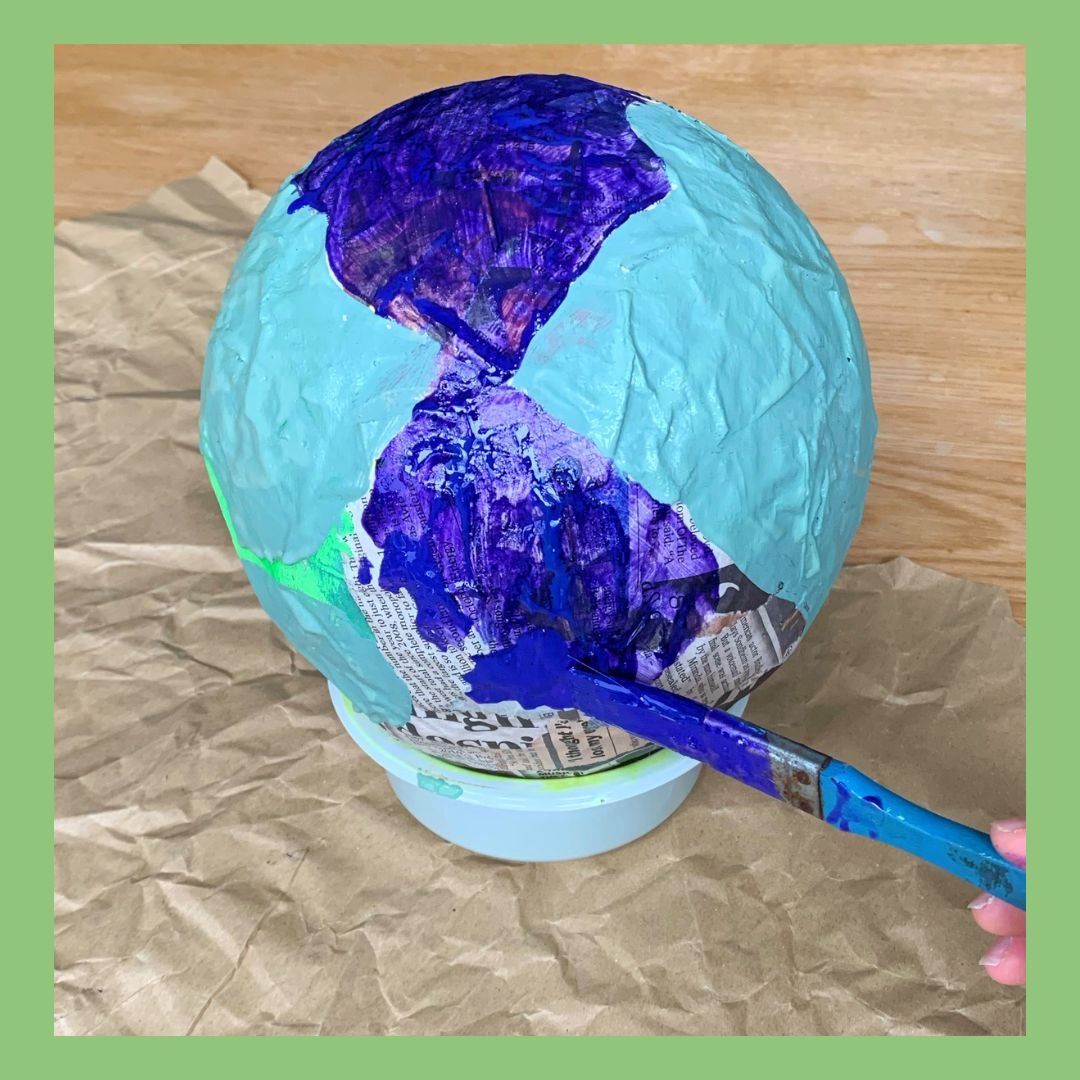Arts & crafts: Paper mâché globe
There are many reasons why trees are cut down. They may be used for wood, paper or fuel. Sometimes the land beneath the forests is needed for mining, for farming, to raise cattle and grow crops or to build new roads and cities. As the human population grows and we demand more, the number of trees being cut down increases.
Deforestation can leave our environment with many problems that affect the land, animals and local people. But there are things we can do to help protect trees and forests for the future. Paper is made from trees and is a household item that we use a lot. It often gets wasted, but it's easy to recycle.
Let's get messy and use some waste paper to make our own planet Earth using papier-mâché.
Things to reuse or borrow
used paper
glue (PVA or wallpaper paste
a balloon
a paint brush and paints to decorate
Instructions
Start by raiding the recycling bin for scrap paper. You can use old newspapers or magazines as well as other scrap paper.
Tear your scrap paper into strips about 2cm wide and 10cm long.
Next, blow up and tie your balloon, but don't overfill it, incase it bursts. You might want to set you balloon on the top of a bowl whilst you are making your globe.
If you are using PVA glue, then ask a grown up to mix equal parts PVA with water in a bowl. Alternatively, you can use leftover wallpaper paste.
Now you are ready to start... Brush a thin layer of glue onto the balloon and start sticking strips of paper to it. Aim to stick the strips so they are overlapping and running in different directions. Make sure you use enough glue, so all the paper is firmly stuck down.
Keep covering your balloon with papier-mâché until you have between 4 and 6 layers.
Leave your balloon to dry completely, this could take at least a day or more.
Once your papier-mâché is dry, use paints to decorate your globe. You can paint the continents and oceans in green and blue to look like the actual globe or you could try more abstract colours. Add as much detail as possible - think about where there are big forests or where certain animals live?
This recipe is taken from our tremendous trees themed Tool Kit For Eco Heroes.
Each of our themed Tool Kits are packed with hours of activities to gently teach children (and their families) about our environment. Find out more here.


